#Ararat brandy
Text
14/10/2023 15:45

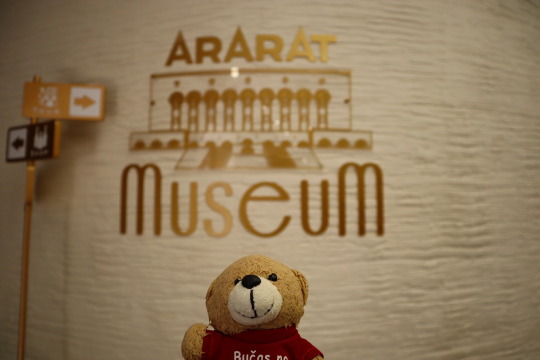




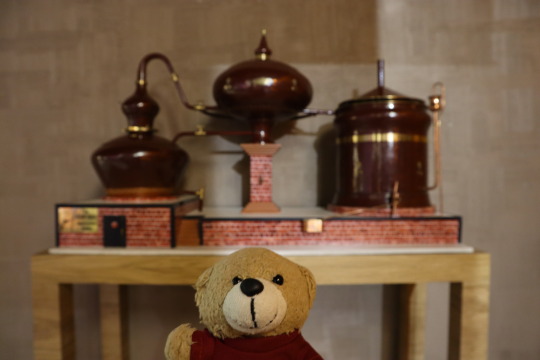
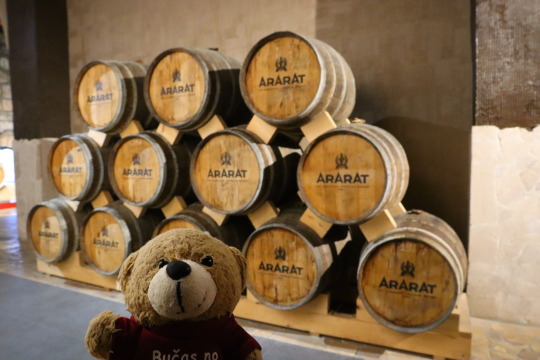






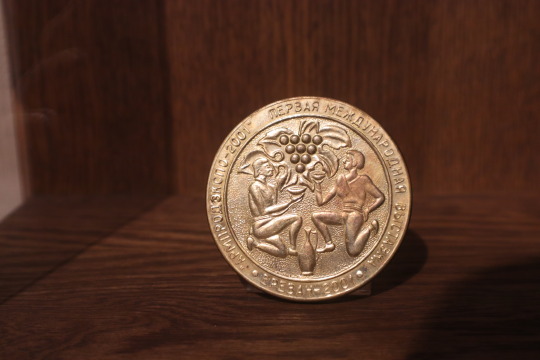

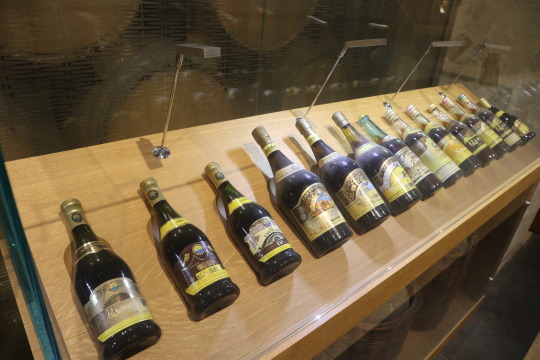
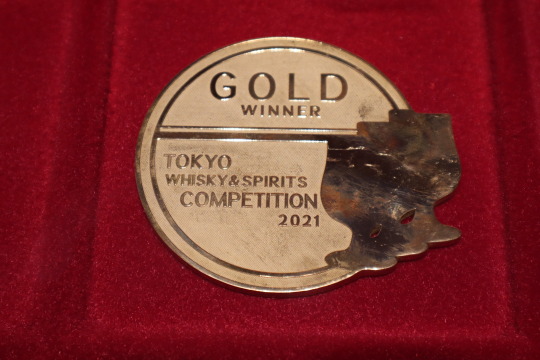


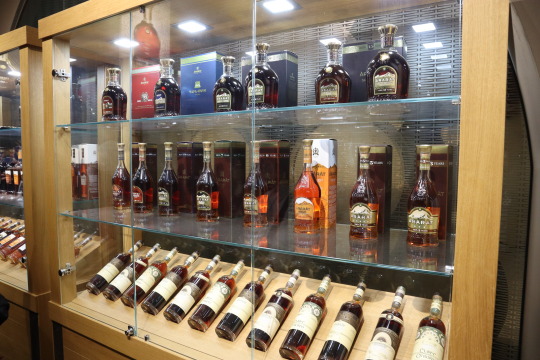



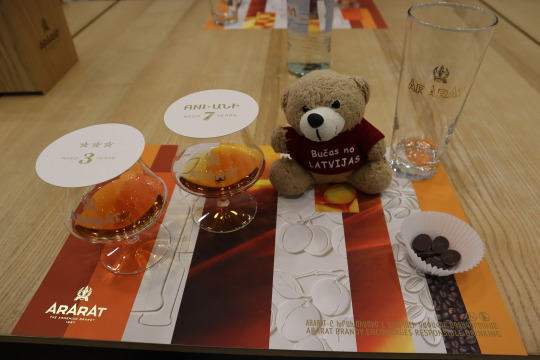

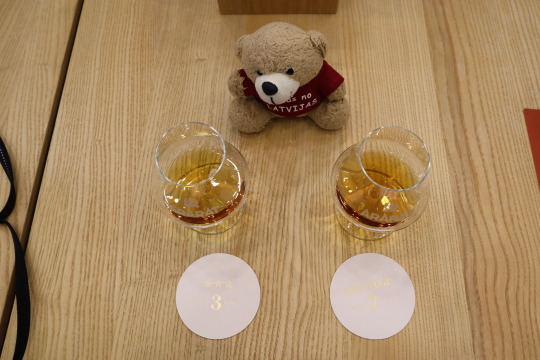

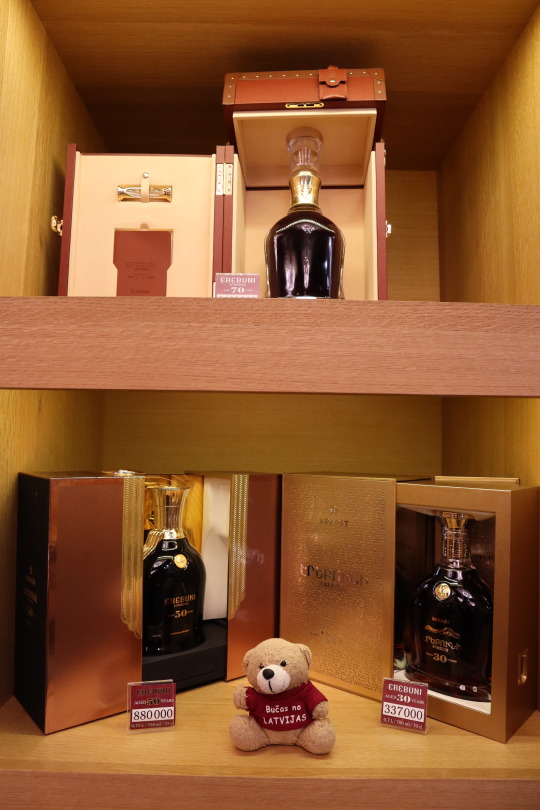
アララトブランデー醸造所🍷
追加観光で醸造所を見学&テイスティングさせてもらいましたが、一口入れたら口の中が燃えます🔥
アルコール度数40度超えだったそうですomg
建物の入口にいた警備員さん(これまた今回の旅で間違いなくNo.1のイケメンくんでした)とうちの相棒の記念撮影を試みましたが、突然、必死の形相でNo! No! No!と必死に断られました。
「僕はsecurityだからNoなんだよーー!!」
また、私は知りませんでしたが、アララトブランデーはお酒好きには密かな人気があるらしく、売店で爆買いしている方も多数いらっしゃいました。
#備忘録#reminder#photography#Armenia#アルメニア#アララトブランデー#🍷#Ararat brandy#Ararat museum#Ararat Moments#🇦🇲#イケメン見つけた笑
21 notes
·
View notes
Text






Kevin Spacey visited the ARARAT Museum of the Yerevan Brandy Factory.
Yerevan, Armenia.
3 notes
·
View notes
Text
Like a year ago the only liquor store in my area that stocks my fav brandy, Ararat 5 Star, stopped stocking it. Shortly therafter they also stopped carrying another fav, Sacred Bond. I'm now realizing I'm going to face the New Years brandyless and i now have half a mind to take the train up to Glendale and just buy a case of brandy
0 notes
Text
ARARAT Honey: Yerevan Brandy Company presents unexpected ... - NEWS.am
ARARAT Honey: Yerevan Brandy Company presents unexpected ... NEWS.am
0 notes
Text


La Yerevan Brandy Factory, che produce il brandy Ararat, ha interrotto le consegne di merci in Russia, ha dichiarato il ministro dell'Economia armeno Vahan Kerobyan.
"Certo, non ho ricevuto informazioni ufficiali, ma sembra che sia ufficiale che la fabbrica di brandy di Yerevan smetterà di esportare in Russia", ha detto il capo del ministero dell'Economia, parlando al parlamento armeno (citato da RIA Novosti) . .
Huangjiu a barili. Chissene.....
0 notes
Photo
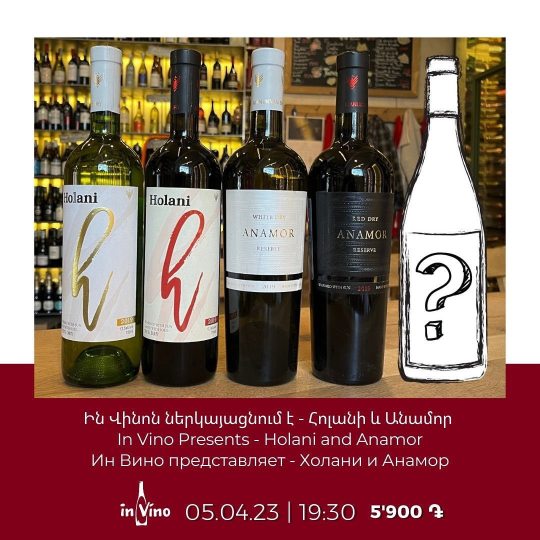
*Ներառում է Խորտիկներ *Includes a snacks *Включая закуски Երեկոն կանցկացվի հայերեն ՝ անգլերեն և ռուսերեն թարգմանությամբ: The evening will take place in Armenian with English and Russian translation. Дегустация будет на армянском с переводом на английский и русский языки. Երեկոյի Գինիները | Wines of the Evening | Вина вечера 1. Հոլանի սպիտակ | Holani White | Холани белое 2. Հոլանի կարմիր | Holani Red | Холани красное 3. Անամոր սպիտակ | Anamor White | Анамор белое 4. Անամոր կարմիր | Anamor Red | Анамор красное 5. Անակնկալ նորություն | Surprise wine | Вино-сюрприз 1989 թ-ին Մելիք Մանուկյանը ստեղծեց իր առաջին ապակե տարաների գործարանը, որի խրոխտ շարունակությունը եղավ «Արծվի» արձանի դիմաց գինու և կոնյակի գործարանի հիմնումը: Կոտայքի մարզում ստեղծված այս գործարանը օգտագործում է Վայոց Ձորի Աղավնաձոր գյուղի և Արարատյան դաշտավայրի արևահամ Սև Արենի, Ոսկեհատ, Կանգուն և այլ խաղողները: Ապրիլի 05-ին համեցեք Ին Վինո՝ համտեսելու և քննարկելու Մանուկյան գինու և կոնյակի գործարանի գինիները և ծանոթանալու պատմության հետ: - In 1989, Melik Manukyan created his first glass factory, the bold continuation of which was the establishment of a wine and brandy factory in front of the "Artsvi" statue. This factory, created in the Region of Kotayk Marz, uses grapes such as the Areni Noir, Voskehat, Kangun and from the Aghavnadzor village of Vayots Dzor and the Ararat Valley. Come to In Vino on April 5th to taste and discuss wines from Manukyan Winery and Brandy Factory and learn about their history. - В 1989 году Мелик Манукян создал свой первый стеклотарный завод, смелым продолжением которого стало открытие винно-коньячного завода по производству вина и коньяка перед памятником Арцви. Винодельня, открытая в Котайской области, использует солнечные Сев Арени, Воскеат, Кангун, и другие сорта винограда села Агавнадзор в Вайоц Дзоре и Араратской долины. Заходите в Ин Вино 5-го апреля, чтобы познакомиться, попробовать и обсудить вина производства Манукян винно-коньячного завода. #Armenia #Yerevan #6Saryan #InVino #Winetasting #wine #Holani #Anamor #wine #redwine #whitewine #newwine #armenianwine (at In Vino EVN) https://www.instagram.com/p/CqcvOZzsNRD/?igshid=NGJjMDIxMWI=
#armenia#yerevan#6saryan#invino#winetasting#wine#holani#anamor#redwine#whitewine#newwine#armenianwine
0 notes
Text
Armenia travel video lesson
Vocabulary pronunciation
situated
Flea
Vocabulary
A great glimpse into local everyday life
with artsy statues and beautiful floral decoration
Visit a flea market to bring a souvenir back
take a tour of the Ararat brandy factory
the statue is situated on a high pedestal
Video
Text
As the capital of historic and culturally rich Armenia, Yerevan has a lot to offer to its visitors. So if…

View On WordPress
0 notes
Text


16 notes
·
View notes
Photo

#ArArAt #Brandy #Factory https://www.instagram.com/p/CECU3CInk0t/?igshid=que0ycsujwoh
0 notes
Photo

Victoria Semykina
Illustrations from the book "Ararat" containing historical episodes, aphorisms, poetry etc. related to Armenia and the Ararat brandy.
147 notes
·
View notes
Text
Wednesday 10 [12] August 1840
6 ½
12
fine morning R19 ½° now at 7 50/.. – breakfast at 8 ¼ - A- and I out at 10 5/.. sauntered about Adam and the Cossack and one of the princes’ red (his livery red) footman with us à la Tcherkesse – the river (Tchekhouchia 4v. off) alluent de la Dojourni which falls into the Engour [Enguri] 2 lieues = 8v. off – (Dubois iii. 36) – then to the little bazaar – a widish street about 200 yards long – very picturesque A- sketched while I pepped into the shops – hunted out a plate like the one broken on Monday 1/2 ab. paid 45 paras –
wool short sherst, 5/. silver per pood
wax (vosk) 12/. ditto per ditto
cotton (boumaghi) 8/. ditto per ditto
silk (in the thread) sholko, 17/. ditto per ditto
looked at a gun 4/. silver and then at some of the princes old guns – gun (rōōgeĕ in Russ) the prince has one worth 1000/. silver that carries 1080 sagènes and is 3 archines long! – from the bazaar to the garden – pretty 8tagon galleried round house – the princes library a 1er. glazed all round and his French agent, Mr. Liétard arrived about a month ago, lives for the present in the damp rez de chaussée – mentioned the queer insect that bit A- and myself and stuck fast – it is clêtchĭ in Russian – bites sheep and hares – has shot the latter with their heads quite swollen and full of these insects – unless they fall off of themselves i.e. if one pulls them out they leave their heads in the place they have bit – then saw the new church finished in 1827, but the interior has yet to be painted good sized neat plain whitewashed in and out Georgian like church – a priest, and prayers every evening – the little old church in the little old barn style but good and picturesque remains close to the house the palace 300 yards old said the footman – it was about 12 when we all went to the princess – glad to see us – A- sickish went home till dinner to lie down but returned then seeming pretty well – It was Nachitshevan the princess said yesterday was swallowed up by the Earthquake and Ararat [?] in two – the shock much felt at Tiflis – Dadians’ son not sure of succeeding his father as prince regnant – Madame Latchinoff noticed by Madame G- said the rest must notice her but no better than she should be – Tolstoy admires her – her husband beats her – glad to be rid of her – and she tells all this to all the gents – Madame de Baku smokes and drinks vodki (brandy) – G- promises – forgets and does nothing – Mr. Rivoire the Ex French consul at Tiflis in disgrace at home for being too good friends with the Russian authorities and sending not enough information home – unjust – the present consul sent out by Soult almost against the poor mans’ will who had taken a year to consider of it – (baron de la Chapelle) – has no experience and no clever persons in his chancellerie at Tiflis to get political information – Rivoire clever – writes well – knows what is about said Mr. Liétard – Had thought to go to Anaklia from here and then Redut Kala and Guria – A- would like the Suanéthi [Svaneti] tour – had our privadnik (the prince)
Mr. Liétard the biting insect Clêtchi or clêchi.
David.......... in and princess D-, and I with the map before settled our route to Muri and back to Redut Kale and Guria to Koutaïs – impossible to thro’ Suannetti and back all the way on horseback – some dangers in going now to Suchum Kale – dinner about 2 – our Koutaïs M.D. again – says Dubois’s work is severely criticised in Germany – coffee – sat a little while with the princess gave her my address aux soins de Messrs. Hammersley, and my English address at Shibden and afterwards my card “Mrs. Lister Shibden hall” she came home with us at 4 – were to have been off then – but the mourave had got Thamar (the dark grey baggage mare) thought she belonged to one of the peasants, who all turn on to the green, and the mourave and any people authorized by the price take what horse and whenever they please! mentioned our Lailache man – pity I had not named it to the prince – I had forgot – astonished at our having peasants (serfs) in England – the princess sat with us till off – begs us to go, and see her mother in Cachétie – the princess takes no exercise tired with walking the about 200 yards to us – 2 months gone with [?] – very interesting person – the mare was brought back – off at 5 50/.. – our along the plain along little narrow lanes thro’ alder bushes for nearly ½ way then high brackens then wood, and lastly marshy ground and high Indian corn 3 umbrellas high = 8ft. – tired 2 or 3 places houses huts not good enough at last pulled down the poor mans’ wicker fence – rode thro’ his Indian corn (a path) and alighted village of Liia on the Engour [Enguri] but we not near the river at 10 10/.. – good sacle – 5 or 6 women – as many men slept outside and the children know not how many (6 or 8) moved to another tarti and the one next the door given to us – A- had kept up very badly – ill or out of sorts – lay down and fell asleep immediately – took nothing – I supped on the princess’ bread and my odorous Choni [Khoni] cheese and the Dadian good red wine and water and 2 salted cucumbers – very good and she had given me 6, and a large fresh cheese and 8 or 10 rolls or more and 2 bottles red wine for myself and 2 white for A- and 6 or 8 wax candles and fresh cucumbers and apples – lay down quite dressed at 12 – very fine day – latterly a little gentle rain or dew – the dews excessive here –
5 notes
·
View notes
Text
Wednesday 12 August 1840
[Anne misdated this entry as Wednesday 10 August]
[up at] 6 1/2
[to bed at] 12
fine morning Reaumur 19 1/2° now at 7 50/.. – breakfast at 8 1/4 – Ann and I out at 10 5/.. sauntered about Adam and the Cossack and one of the prince’s red (his livery red) footmen with us à la Tcherkess – the river (Tchekhouchia) 4 versts off affluent de la Djoumi which falls into the Engour 2 lieues = 8 versts off – (Dubois iii. 36) – then to the little bazaar – a widish street about 200 yards long very picturesque Ann sketched while I peeped into the shops – hunted out a plate like the one broken on Monday 1/2 abasse paid 45 paras –
wool short sherst, 5/. silver per pood
wax (vosk) 12/. ditto per ditto
cotton (boumaghi) 8/. ditto per ditto
silk (in the thread) sholko 17/. ditto per ditto
looked at a gun 4/. silver and then at some of the princes old guns – gun (rōōgĕe in Russian) the prince has one worth 1000/. silver that carries 1000 sagènes and is 3 archines long! – from the bazaar to the garden – picturesque octagon galleried round house – the princes library au premier glazed all round and his French agent, Mr. Liétard arrived about a month ago, lives for the present in the damp rez de chaussée – mentioned the queer insect that bit Ann and myself and stuck fast – it is clêtchĭ in Russian – bites sheep and hares has shot the latter with their heads quite swollen and full of these insects – unless they fall off of themselves i.e. if one pulls them out they have their heads in the place they have bit – then saw the new church finished in 1827, but the interior has yet to be painted – good sized neat plain white washed in and out Georgian like church – a priest, and prayers every evening – the little old church in the little old barn style but good and picturesque remains close to the house the palace 300 years old said the footman –
it was about 12 when we all went to the princess – glad to see us – very civil and kind – Ann sickish went home till dinner to lie down but returned then seeming pretty well – It was Nachitshivan the princess said yesterday was swallowed up by the earthquake and Ararat rent in two – the shock much felt at Tiflis – Dadian’s son not sure of succeeding his father as prince regnant – Madame Latchinoff noticed by Madame Golovin so the rest must notice her but no better than she should be – Tolstoy admires her – her husband beats her – glad to be rid of her – and she tells all this to all the gentlemen – Madame de Baku smokes and drinks vodki (brandy) – Golovin promises – forgets and does nothing – Mr. Rivoire the ex French consul at Tiflis in disgrace at home for being too god friends with the Russian authorities and sending not enough information home – unjust – the present consul sent out by Soult almost against the poor man’s will who had taken a year to consider of it – (baron de la Chapelle) – has no experience and no clever persons in his chancellerie at Tiflis to get political information – Rivoire clever – writes well – knows what he is about said Mr. Liétard –
Had thought to go to Anaklia from here and then Redut Kale and Guria – Ann would like the Suanéthi tour – had our provadnik (the prince) David . . . . . . . in and princess Dadian and I with the map before settled our route to Muri and back to Redut Kale and Guria to Koutaïs – impossible to [go] thro’ Suannetti and back all the way on horseback – some danger in going now to Suchum Kale – dinner about 2 – our Koutaïs M.D. again – says Dubois’ work is severely criticized in Germany – coffee – sat a little while with the princess gave her my address aux soins de Messrs Hammersley, and my English address at Shibden and afterwards my card ‘Mrs. Lister Shibden hall’ she came come with us at 4 – were to have been off then – but the mourave had got Thamar (the dark grey baggage mare) thought she belonged to one of the peasants who all turn on to the green, and the mourave and any people authorized by the prince take what horse and whenever they please! mentioned our Lailache man – pity I had not named it to the prince – I had forgot – astonished at our having peasants (serfs) in England – the princess sat with us till off – begs us to go, and see her mother in Cachétie – the princess takes no exercise tired with walking the about 200 yards to us – 2 months gone with child – very interesting person –
the mare was brought back – off at 5 50/.. – our [road] along the plain along little narrow lanes thro’ alder bushes for nearly 1/2 way then high brackens then wood, and lastly marshy ground and high Indian corn 3 umbrellas high = 8 feet – tried 2 or 3 places houses huts not good enough at last pulled down the poor mans wicker fence – rode thro’ his Indian corn (a path) and alighted at village of Liia on the Engour but we not near the river 10 10/.. – good sacle – 5 or 6 women – as many men slept outside and the children know not how many (6 or 8) moved to another tarti and the one next the door given to us – Ann had kept up very badly – ill or out of sorts – lay down and fell asleep immediately – took nothing – I supped on the princess’es /sic/ bread and my odorous Choni cheese and the Dadian good red wine and water and 2 salted cucumbers – very good – she had given me 6, and a large fresh cheese and 8 or 10 rolls or more and 2 bottles red wine for myself and 2 white for Ann and 6 or 8 wax candles and fresh cucumbers and apples – lay down quite dressed at 12 – very fine day – latterly a little gentle rain or dew – the dews excessive here –
Anne’s marginal notes:
Mr. Liétard
the biting insect clêtchi or clêchi.
Liia village of
WYAS page: SH:7/ML/E/24/0174
#anne lister#ann walker#anne lister code breaker#gentleman jack#diary1840unannotated#russianempire1840#georgia1840#zugdidi1840
5 notes
·
View notes
Photo

Armenian Wine Traditions Rediscovered
For a long time, Armenia’s prominent alcoholic beverage was brandy. The 2007 discovery of a 6,000-year-old winery in a cave in Armenia’s Vayots Dzor town of Areni was an invitation for Armenians to rediscover their ancient wine-making traditions. Starting in the 2010s, Armenia’s once-forgotten wine culture began to reemerge and take on new forms. Wine reclaimed its place on Armenian tables and during social gatherings where vodka and brandy once dominated.
Armenia’s first wine bar opened in 2012, a milestone for Armenia’s contemporary wine culture. Today, wine bars and restaurants centered around quality wine are found all over the capital, while numerous wineries offer wine tours, authentic food and historical and cultural experiences to visitors in traditional winemaking regions of Armenia––Vayots Dzor, the Ararat Valley and the slopes of Mount Aragats. While the discovery of the wine-making facility in the Areni cave proved that wine was made in the region at least six thousand years ago, cuneiform inscriptions and archeological evidence from the 1st millenium BCE, and written text in medieval manuscripts also prove that winemaking and viticulture were advanced in Armenia during the Urartian Kingdom, and that wine and grapes had an important place in religious symbolism as well as the economy of Armenia in the Middle Ages.
Elixir for the Afterlife
Areni, where the cave is located, is also the name of a grape endemic to the area. In the Areni cave, archeologists unearthed a large, 60-centimeter-deep vat buried next to a shallow, 1-meter-long basin made of hard-packed clay with elevated edges. This is where the Stone Age humans inhabiting the region stomped grapes into wine. The wine press is not the only evidence proving that wine was actually produced in the cave––there is also DNA-based evidence. Malvidin, the substance that gives red wine its color, was found in jars in the cave.
Initially the archaeologists who made the discovery thought that Stone Age humans used the cave as a dwelling. Deeper analyses of the artifacts, however, suggests that the cave was a site of rituals and burials and that humans incorporated wine in complex belief systems and traditions going as far back as the Stone Age. Some of the jars found in the cave contained bones of humans and animals, further supporting the idea that the cave was a site for rituals. Through analysis of the human bones it was revealed that most of the bones belonged to young women aged 11 to 25. These girls and young women all died by skull fracture, suggesting that they were sacrificed and not simply buried in jars. Furthermore, archaeologists believe that a special caste of women was bred for the sole purpose of sacrifice.
There is a growing belief among archeologists that conceptualizations of the meaning of life and wine were interconnected in ancient times. Traces of blood were found in the jars suggesting that blood was mixed with wine. The artifacts and human remains found near the wine press further support a connection between wine and sacrificial and burial rituals. Wine was also used in funerary rites, which involved cremation. After the body was cremated wine was poured over the ashes from gold and silver chalices and bowls. Animal-shaped jugs, goblets, rhytons, and vessels used during rituals to pour wine were often decorated with ornaments symbolizing eternity and celestial bodies.
Archeological evidence proves that as far back as the 3rd millennium BCE, wine played an important role in economic and social life on the territory of Armenia. For the Kingdom of Urartu, [1] established around the 1st millennium BCE, wine was not only an important component of rituals dedicated to their gods, it was also a commercial commodity which was exported to other regions. This is evidenced by cuneiform inscriptions dating to the Urartian Kingdom, which refer to the planting of vineyards, using wine in sacrifices, building wine cellars, and storing wine. Urartian kings were also known for building water canals and promoting horticulture in their territories. For them, this action was no less important than military victory.
Although the wine press discovered in Areni is the oldest such facility discovered in Armenia, it is not the only one. A 3rd to 1st century BCE wine press was discovered near Armenia’s old capitals Armavir and Dvin, and another was discovered near the ruins of the fortress of Garni which was used as the summer residence of pagan as well as Christian Armenian kings. Urartian texts noted the advanced state of viticulture in Armenia in the 8th century BCE, and a 2500-year-old wine cellar was found at Karmir Blur in Yerevan.
Wine Traditions in Medieval Armenia
Like many other cultures, in Armenia, many Christian holidays, like the water festival Vardavar or the grape blessing festival Khaghoghorhneq have their roots in pagan rituals. Christian traditions also took the importance of grapes and pomegranates in paganism and their significance in representing life and death, eternity and the endless cycle of life. In Christian traditions, Jesus Christ shed his life-giving blood, represented during Christian holidays by wine, for the cleansing of the sins of mankind. That is why on Armenian cross-stones, the cross is carved as the tree of life, also called the blooming cross, symbolizing the grape vine or a pomegranate tree. Grapes and pomegranates are also frequently used to decorate cross stones, and are used as ornaments decorating the walls of churches, symbolizing eternity and rebirth.
Carvings on Armenian churches and cross-stones, as well as paintings in manuscripts, tell us that medieval Armenians pictured paradise as a vineyard where the state of peace was depicted as people harvesting grapes, making wine, and enjoying it. Door frames of churches and the edges of cross-stones often depict embroidered ornaments which look like intertwined grape wines, again representing eternity and the Garden of Eden.
Like the Stone Age humans living around the cave of Areni, medieval Armenians also thought of wine as a drink capable of imparting immortality. Depictions of wine on wake tables and soldiers drinking it before battle are found on numerous gravestones around the country.
Although Armenia’s last independent kingdom fell in 1045, from the 11th through the 15th centuries, there were semi-independent princes in different parts of historic Armenia, who managed to keep their princedoms in relative peace and where Armenian culture and traditions continued to thrive, including winemaking. Like the Urartian kings, medieval princes of Armenia also exported the wine they produced.
In the Middle Ages, monastic complexes were also large wine-producing institutions and were among the largest vineyard owners. Monasteries also received vineyards and wine from kings and princes as gifts. A 7th-century wine press was found near the Zvartnots Cathedral [2] and around 20 wine jars were found in the library of the monastic complex of Haghpat in northern Armenia.
At the beginning of the 16th century, Armenian provinces were divided between the Ottoman and Persian empires. Raids and invasions by nomadic tribes and bans imposed on the production of alcohol by Muslim rulers had a devastating impact on viticulture and wine-making traditions in Armenia, and many vineyards were destroyed or deserted. The region of Vayots Dzor, one of the main centers of wine production in Armenia, suffered greatly, from where many Armenians were forced to leave, mainly to settle in Persia. In the 17th century Persian Abbas the Great exiled 300,000 to 500,000 Armenians to Persia. Following the exile of Armenians, their villages were inhabited by various Muslim peoples. The newcomers did not use grapes for wine, but rather for consuming fresh and dried grapes. As the wine grape is different from the one used for everyday consumption, most of the wine grapes were destroyed.
Reviving an Ancient Tradition
The seeds of reviving ancient Armenian wine traditions were planted in 1877, when the Yerevan Ararat Brandy Factory was established, after eastern Armenia and Yerevan became part of the Russian Empire. Although wine started to be produced in Armenia again on a large scale, it was mainly done for quantity rather than quality, and mostly sweet wines were produced. In the Soviet era, wine was produced more in Georgia and Moldova, while Armenia was tasked to focus on the production of brandy. For this reason, grape varieties for red wine production were neglected, while white grape varieties used for the production of brandy were cultivated and their quality was improved. Armenian vineyards also suffered in the 1980s, when the Soviet authorities under Mikhail Gorbachev introduced a partial prohibition on alcohol. Many vineyards in Armenia, including vineyards on the territory of the Dalma Gardens were destroyed during this period.
Although a few wine factories were opened in Armenia after independence in 1991, it was not until the first decade of the 21st century when Armenia experienced its wine boom. The revival of Armenia’s winemaking and wine drinking culture was also thanks to many diaspora Armenians, who moved to Armenia with their expertise and resources and put Armenia back on the wine map of the world.
Today, Armenians celebrate their ancient love for wine on the streets of Yerevan and the wineries and gastro yards of Aragatsotn, Ararat and Vayots Dzor regions. Every year at the end of May, Yerevan Wine Days are held. For three days, Saryan Street is closed to traffic, and local wineries put up stalls where they present their wares. Tourists and locals get to enjoy the wine together with local and international food. Saryan Street is the site of the very first wine bar in Yerevan. Now Saryan is a bustling street boasting many cafes and restaurants.
In October, Vayots Dzor pays tribute to winemaking with its own Areni Wine Festival, a few hundred meters from the Areni cave. Here local producers gather to present their wines to visitors. Wine tastings are accompanied by music, dances and the traditional crushing of grapes; young men and women crush grapes with their feet, singing and dancing during the process, as their ancestors did long before them.
Footnotes:
[1] Also known as the Kingdom of Van, named after its capital Van-Tushpa.
[2] The ruins of the Zvartnots Cathedral are adorned by carvings of grape vines and leaves, which have served as an inspiration for carvings in many modern-day buildings in Yerevan.
2 notes
·
View notes
Photo

In Love with this Sunset view of @araratmuseum ❤️ #Ararat #Brandy #Cognac #ArmenianBrandy #Yerevan #Armenia #Sunset #Factory #AraratCognac #City #View #Sun #Bridge #Երևան #Արարատ #Կոնյակ #Հայաստան #Арарат #Коньяк #АрмянскийКоньяк #NoFiltre (at Yerevan, Armenia) https://www.instagram.com/p/BzJQYN_n4xk/?igshid=u1lxgx9ty44i
#ararat#brandy#cognac#armenianbrandy#yerevan#armenia#sunset#factory#araratcognac#city#view#sun#bridge#երևան#արարատ#կոնյակ#հայաստան#арарат#коньяк#армянскийконьяк#nofiltre
0 notes
